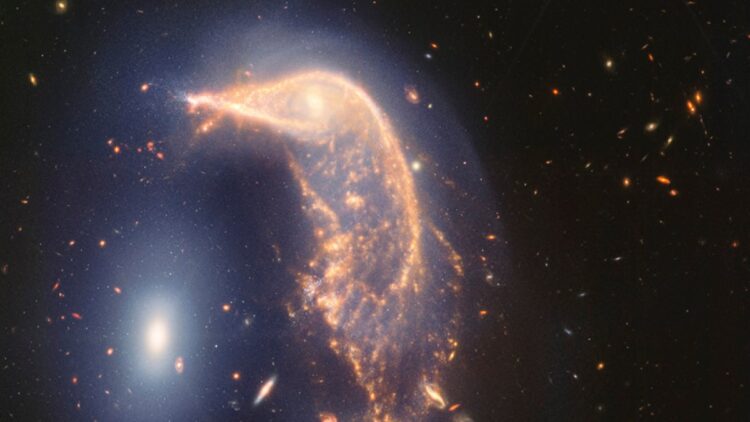NASA releases photographs of two entangled galaxies to mark two-year anniversary of James Webb Area Telescope.
The US Nationwide Aeronautics and Area Administration (NASA) has launched photographs from the James Webb Area Telescope exhibiting a pair of entangled galaxies.
The area company launched a photograph of the 2 galaxies — one named Penguin and the opposite Egg — on Friday, marking the two-year anniversary of Webb’s actions capturing pictures of area.
“In simply two years, Webb has remodeled our view of the universe, enabling the form of world-class science that drove NASA to make this mission a actuality,” mentioned Mark Clampin, director of the Astrophysics Division at NASA, mentioned in a information launch.
“Webb is offering insights into longstanding mysteries in regards to the early universe and ushering in a brand new period of finding out distant worlds, whereas returning pictures that encourage folks world wide and posing thrilling new inquiries to reply. It has by no means been extra attainable to discover each aspect of the universe.”
We’re celebrating two years of science for @NASAWebb! 🎉
The second anniversary picture from the most important telescope in area exhibits two interacting galaxies known as the Penguin (NGC 2936) and the Egg (NGC 2937), entwined in a sluggish cosmic dance: https://t.co/x4GImWwTRw pic.twitter.com/po60sNkQQN
— NASA (@NASA) July 12, 2024
NASA says that the 2 galaxies — about 326 million light-years away — have been wrapped up with one another for tens of thousands and thousands of years. One mild 12 months, a reference to distance reasonably than time, is about 5.8 trillion miles.
The Webb Telescope, which specialises in capturing infrared mild, is taken into account the successor to the well-known Hubble Area Telescope and has helped convey a few collection of discoveries and awe-inspiring pictures from area during the last two years.
The cosmic dance between the 2 galaxies was set in movement between 25 and 75 million years in the past, in keeping with a information launch from NASA.
“They’ll go on to shimmy and sway, finishing a number of further loops earlier than merging right into a single galaxy lots of of thousands and thousands of years from now,” it reads.












